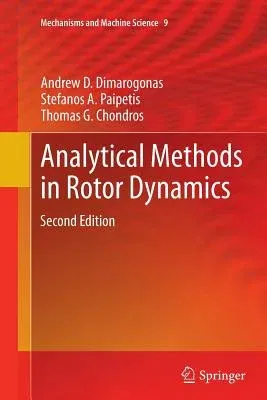Andrew D Dimarogonas
(Author)Analytical Methods in Rotor Dynamics: Second Edition (2013)Paperback - 2013, 7 March 2015

Qty
1
Turbo
Ships in 2 - 3 days
In Stock
Free Delivery
Cash on Delivery
15 Days
Free Returns
Secure Checkout

Part of Series
Mechanisms and Machine Science
Print Length
274 pages
Language
English
Publisher
Springer
Date Published
7 Mar 2015
ISBN-10
940079309X
ISBN-13
9789400793095
Description
Product Details
Book Edition:
2013
Book Format:
Paperback
Country of Origin:
NL
Date Published:
7 March 2015
Dimensions:
23.39 x
15.6 x
1.55 cm
ISBN-10:
940079309X
ISBN-13:
9789400793095
Language:
English
Location:
Dordrecht
Pages:
274
Publisher:
Weight:
408.23 gm